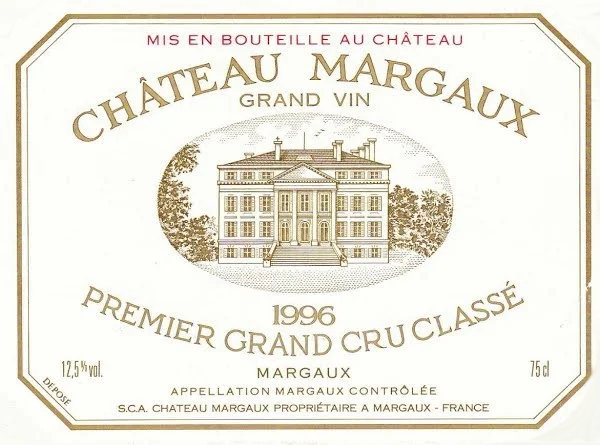Château Margaux 2000
Review of the Estate
Château Margaux is known for producing some of the silkiest, most aromatic wines in Bordeaux and it has been famous for doing so for centuries. The origins of the estate may be traced back to the 15th century when the Lestonnac family took over a grain growing property known as Lamothe (deriving from la motte - meaning a small rise in the land, or hill). The agricultural change from cereal crops to vines was led by Pierre de Lestonnac from 1572 to 1582. Further developments occurred when, over a century later, Chateau Margaux estate manager, Monsieur Berlon, saw the benefits of vinifying red and white grapes separately. This change was what set Chateau Margaux firmly on the path to modern vinification practices and international renown.
This reputation spread over the next several hundred years. Sir Robert Walpole, the English Prime Minister in the early 18th Century, declared himself an avid supporter of Chateau Margaux and was known to purchase four casks every three months! When the Marquis de la Colonilla purchased the estate in the early 19th century, the outstanding reputation of Chateua Margaux's wines demanded an impressive chateau to match. Built in 1810 by Louis Combes, the current chateau is a unique example of the neo-classical style. With its structured facade, balanced by ionic columns, it exudes a refined elegance not dissimilar to that of the wines produced within. Chateau Margaux was officially recognised as an historic monument in 1946.
Today Chateau Margaux is owned by Corinne Mentzelopoulos. Her father, Andrè, purchased the estate in 1977 and invested significantly in the regeneration of the vineyard and winery by installing new drainage systems, replanting vines, creating a new underground cellar and investing in new oak barrels. The result of these improvements is evident in the spectacular and consistent vintages produced by Chateau Margaux since the 1978 vintage. This has allowed Chateau Margaux to remain a dominant force in a highly competitive market and maintain its preeminent global reputation.

Vineyard
Surface area: 192.7 acres
Grape Varieties: 75% Cabernet Sauvignon, 20% Merlot, 5% Cabernet Franc and Petit Verdot
Average age of vines: 35 years
Density of plantation: 10,00 vines per hectare
Average yields: 45 hectoliters per hectare
Average cases produced: 16,500 per year
Plateau of maturity: 9 - 35 years
Château Margaux 2000 Reviews / Tasting Notes
Neal Martin - The Wine Advocate
Point Score: 99
Tasted blind, the 2000 Chateau Margaux was a reminder of the peaks that the millennial vintage could reach. Noticeably deep in color, the bouquet rivets you to the seat with copious red berry fruit, clove and truffle, hints of cedar emerging with time. As the aromatics open and aerate, the fruit profile seems to darken and manifests blackcurrants and bilberries. The palate is medium-bodied with filigree tannin. There is immense depth and symmetry conveyed by this First Growth, quite masculine for the estate with a gentle but insistent grip. It is a brilliant wine that flirts with perfection. Afford it another 3-4 years if you can, because it will last decades. Tasted November 2016.
Wine Spectator
Point Score: 100
Muscular yet classy. Breathtaking aromas of black licorice, violets, berry and cherry, with light hints of spices and minerals. It's all there in the nose. Full-bodied, with an ultrafine tannin structure and a finish that goes on for minutes. This may turn out even better than 1995 due to its layers and layers of fine tannins and fruit but I can't give more than 100 points. Best after 2015.
James Suckling
Point Score: 100
This is like smelling an amazing bouquet of flowers, deep and thought provoking. Notes of raspberries, and strawberries round out the refined nose. Full and silky. More than just silk really, it is almost transparent. Incredibly mellow, yet enticing. It is difficult to find the perfect word. It is as ethereal as Paul Pontieller, managing director of Chateaux Margaux says. The impeccable balance makes this perfect to drink now, but it will get even better with more time. This is already ageless.